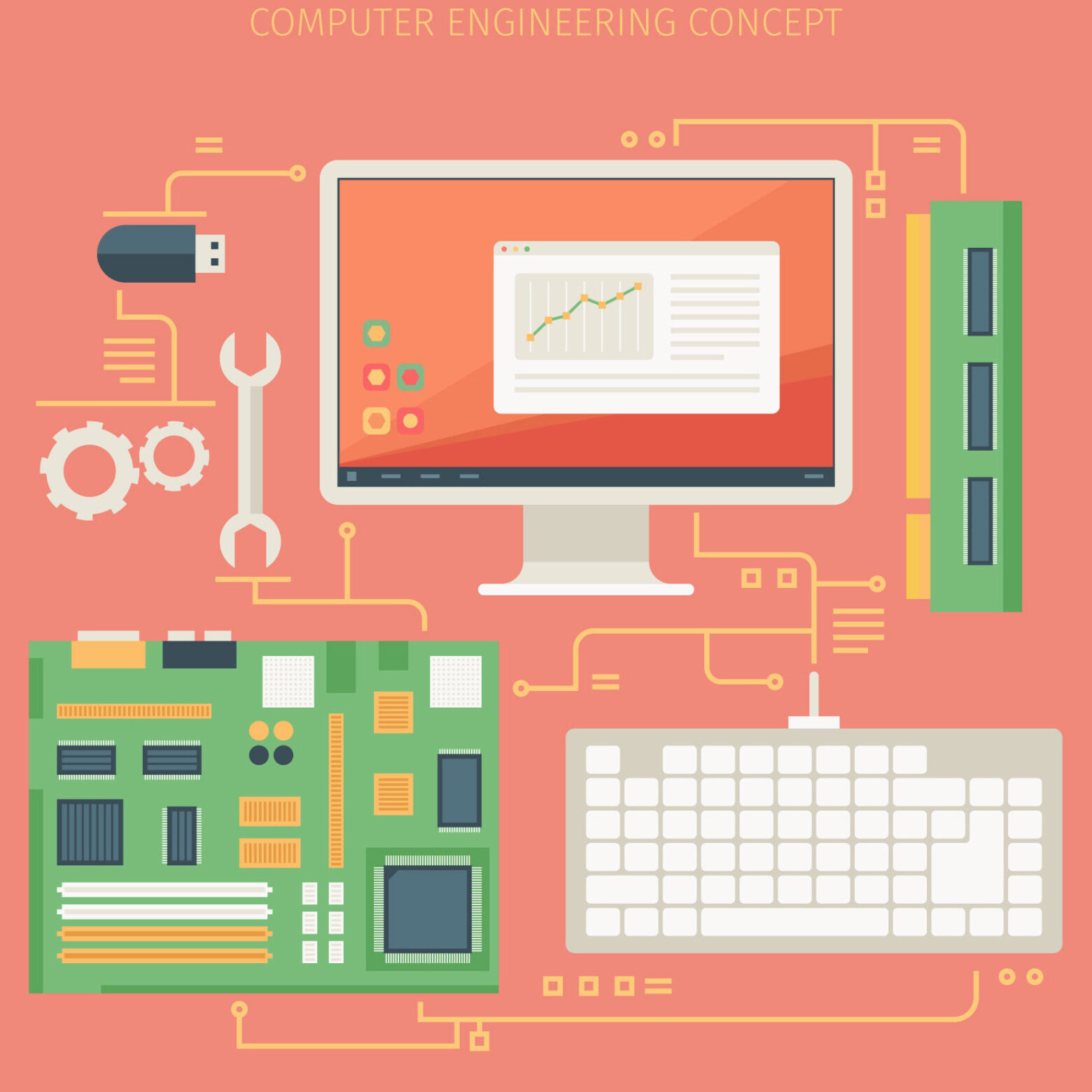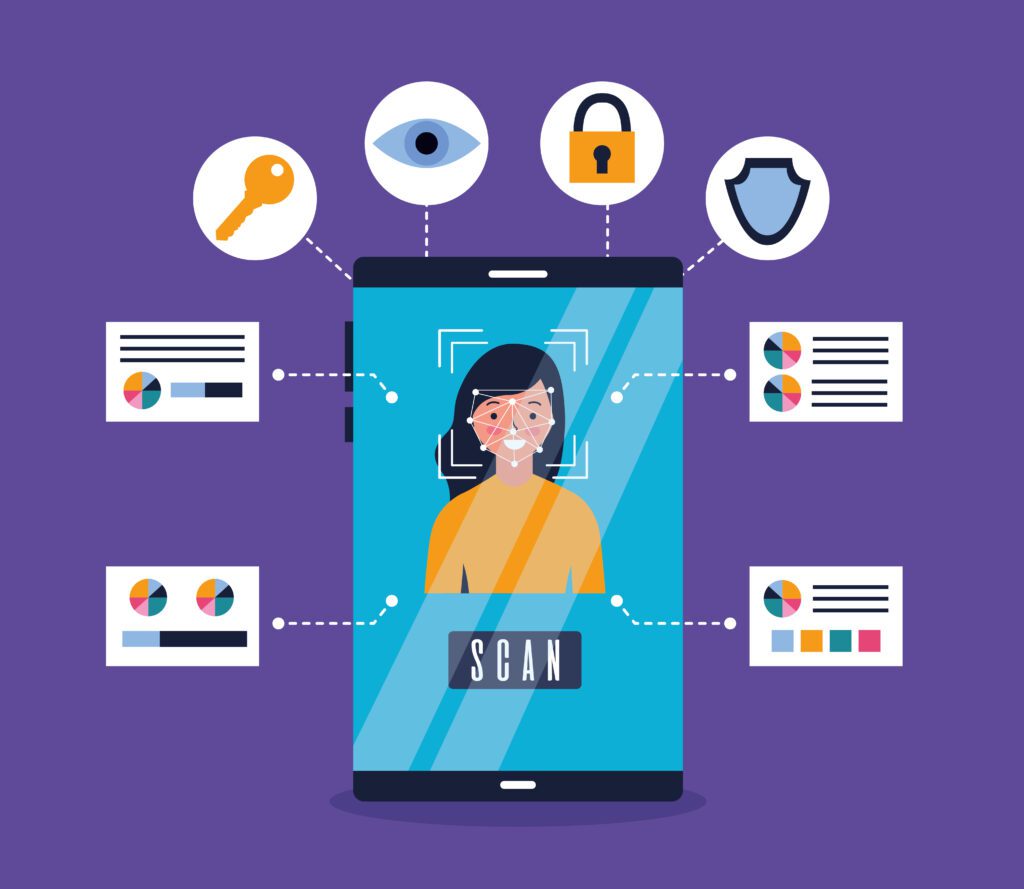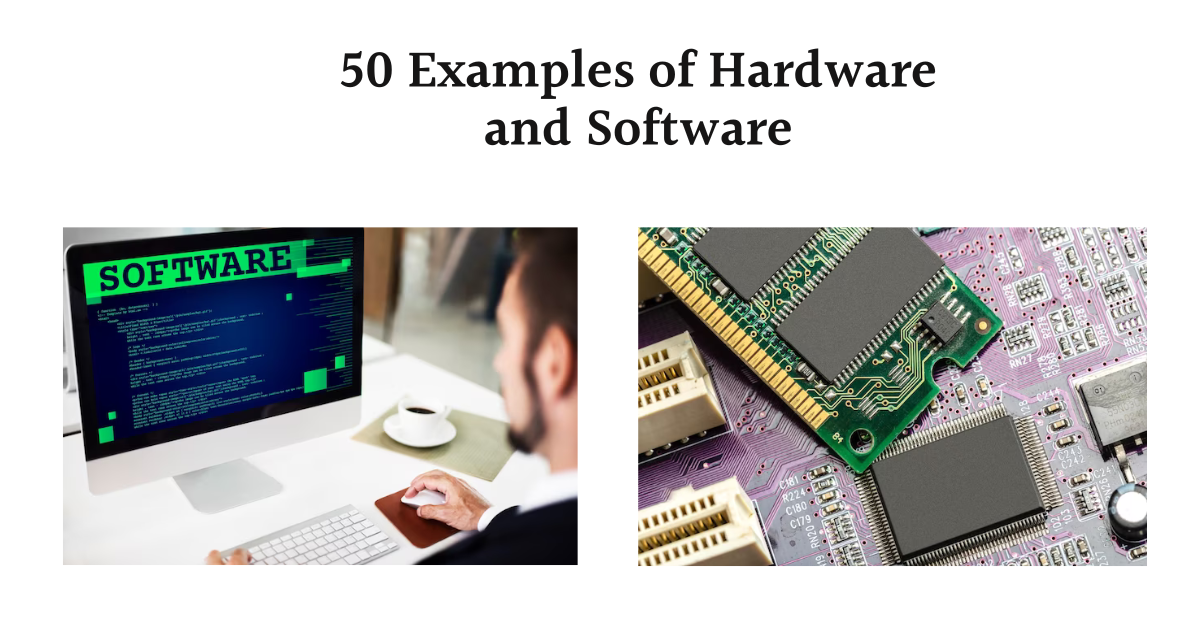In today’s fast-paced technological world, hardware and software play a key role in shaping our lives. From personal devices to complex systems, these two components collaborate seamlessly to enable various functions and tasks. Here are 50 examples of hardware and software that have revolutionized the way we live, work, and interact.
Hardware Examples
- Smartphones: Powerful pocket-sized devices that combine various technologies to offer communication, computation, and connectivity on the go.
- Laptops: Portable computers equipped with processing capabilities, storage, and a display, ideal for productivity and entertainment.
- Tablets: Compact touchscreen devices, larger than smartphones but smaller than laptops, commonly used for browsing and multimedia consumption.
- Desktop Computers: Traditional computing devices designed for stationary use, favored for their high performance and upgradeability.
- Smartwatches: Wearable devices that track fitness, offer notifications, and provide quick access to various applications.
- Fitness Trackers: Dedicated wearable devices to monitor physical activities, heart rate, and overall health.
- Virtual Reality (VR) Headsets: Immersive devices that offer a simulated experience, popular in gaming and training applications.
- Drones: Unmanned aerial vehicles utilized in photography, surveillance, delivery, and exploration.
- 3D Printers: Additive manufacturing devices capable of creating three-dimensional objects from digital designs.
- Smart Home Devices: Internet-connected devices that automate and enhance home management, such as smart speakers, thermostats, and lighting systems.
- Routers: Networking devices that facilitate data communication between devices within a local network and the internet.
- External Hard Drives: Portable storage devices to expand the capacity of computers and back up important data.
- Graphics Cards: Specialized hardware responsible for rendering high-quality graphics in computers and gaming consoles.
- Digital Cameras: Imaging devices used to capture photos and videos with various levels of precision and complexity.
- Bluetooth Earbuds: Wireless audio devices offering freedom of movement during music playback and phone calls.

Software Examples
- Operating Systems: Fundamental software that manages hardware resources and enables communication between users and the computer. Examples include Windows, macOS, and Linux.
- Web Browsers: Software allowing users to access and navigate the internet, such as Google Chrome, Mozilla Firefox, and Microsoft Edge.
- Antivirus Software: Programs designed to protect computers and devices from malicious software and cyber threats.
- Video Editing Software: Applications for editing and enhancing video footage, like Adobe Premiere Pro and Final Cut Pro.
- Image Editing Software: Tools used to manipulate and improve images, such as Adobe Photoshop and GIMP.
- Office Suites: Comprehensive software packages containing word processors, spreadsheets, and presentation tools. Microsoft Office and Google Workspace are prime examples.
- Cloud Storage Services: Online platforms for storing and accessing files and data from anywhere, like Google Drive and Dropbox.
- Media Players: Software that allows users to play audio and video files, such as VLC Media Player and iTunes.
- Virtual Private Networks (VPNs): Software providing secure and private internet connections, commonly used for enhanced online privacy.
- Video Conferencing Software: Applications enabling virtual meetings and collaboration, including Zoom and Microsoft Teams.
- Gaming Platforms: Software ecosystems that host and distribute digital games, like Steam and Epic Games Store.
- Language Learning Apps: Interactive software for learning new languages, such as Duolingo and Rosetta Stone.
- Navigation Apps: Software that utilizes GPS to provide directions and maps, like Google Maps and Waze.
- Social Media Platforms: Online services that facilitate social interactions and content sharing, including Facebook, Twitter, and Instagram.
- Password Managers: Software to securely store and manage passwords for various accounts, such as LastPass and Dashlane.

Hardware and Software Integration
- GPS Devices: Hardware and software integration for navigation and location tracking, commonly used in car navigation systems.
- Gaming Consoles: Devices that combine specialized hardware and software to deliver interactive gaming experiences.
- Point-of-Sale (POS) Systems: Hardware and software solutions used in retail and restaurants to process transactions.
- Smart TVs: Televisions with built-in software for streaming content and accessing internet services.
- Self-Driving Cars: A complex combination of hardware (sensors, cameras, etc.) and software to autonomously navigate vehicles.
Emerging Technologies
- Augmented Reality (AR) Devices: Hardware and software systems that overlay digital content onto the real world, such as Microsoft HoloLens and smartphone AR apps.
- Internet of Things (IoT) Devices: Connected devices that communicate with each other and external systems, like smart home devices and wearable health trackers.
- Blockchain Technology: A decentralized and secure digital ledger system supporting cryptocurrencies and various other applications.
- Artificial Intelligence (AI): Software systems with the ability to learn, reason, and make decisions, utilized in various fields like chatbots and image recognition.
- Quantum Computers: Next-generation hardware capable of performing complex computations exponentially faster than classical computers.
Miscellaneous Examples
- Barcode Scanners: Hardware and software used to scan and decode barcodes, widely used in retail and inventory management.
- Biometric Devices: Hardware and software integration for fingerprint scanners, facial recognition systems, and iris scanners, used for authentication.
- Project Management Software: Applications to plan, track, and manage projects, such as Trello and Asana.
- Language Translation Tools: Software that translates text and speech between different languages, like Google Translate.
- Weather Apps: Software providing real-time weather forecasts and updates.
- E-commerce Platforms: Software powering online shopping websites, such as Shopify and WooCommerce.
- Music Streaming Services: Platforms that offer access to a vast library of music, such as Spotify and Apple Music.
- Language Integrated Query (LINQ): A component of Microsoft’s .NET framework, enabling data querying capabilities in programming languages.
- PDF Readers: Software for viewing and interacting with Portable Document Format (PDF) files, like Adobe Acrobat Reader.
- Voice Assistants: Software programs that use voice recognition and AI to perform tasks, including Siri, Alexa, and Google Assistant.
As technology continues to evolve, we can expect even more impressive examples of hardware and software to emerge, further shaping the way we live and interact with the world around us. These 50 examples provide a glimpse into the vast and exciting possibilities that lie at the intersection of hardware and software innovation.
Remember, this list is by no means exhaustive, and there are countless other remarkable hardware and software examples out there, each contributing to the advancement of technology and the betterment of our lives.

